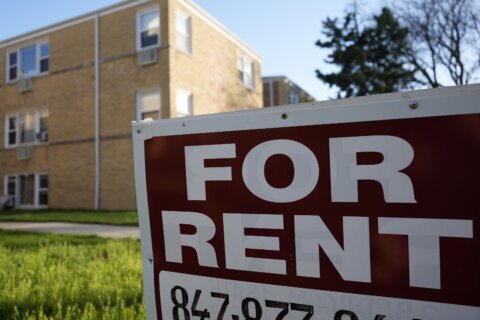Pessimism seems to pervade the American psyche these days. It’s something that President Barack Obama addressed in the State of the Union, arguing that the surge of some Republican presidential candidates comes from their willingness to pour fire on this pessimistic fear of the future.
While Obama’s opinion may have some truth to it, it’s clear that Americans are more pessimistic, in general, than we used to be.
According to a NBC poll in October, only 34 percent of respondents said they believe the American dream still holds true. And 59 percent said they believe children today will be worse off than their parents. This sense that the American dream is diminishing is a distinct characteristic of young people as well. In a November Fusion poll, only 16 percent of 18-to-35 year olds felt the American dream is “very much alive,” compared to 34 percent of 18-to-35-year-olds in 1986.
Like a tree falling in a forest, if so few of us believe in the dream, then does it exist? Well that depends on what your dream is. If we’re talking about becoming a billionaire, owning a yacht and buying whatever your heart desires, then there’s always the Powerball. But if your dream consists of finding a good job, owning a home and having a great retirement, then that’s very much possible. You just might need to work a little bit harder to achieve those things than in the past.
Owning a home isn’t an unachievable hurdle. The homeownership rate for young people remains low. In the third quarter of 2015, the Census Bureau measured the number of people younger than 35 who owned a home at 35.8 percent. While that’s 3 percent higher than first-quarter rates, it’s nearly level with the rate of ownership a year ago.
Part of the reason — completely out of your control — is that home prices continue to rise. They’re up nearly 30 percent since 2012, which makes the hurdle of saving enough for the down payment that much more difficult. And lending is much tighter than it used to be. Considering poor mortgage lending practices led to the 2008 downturn, that’s actually a positive factor.
That doesn’t help you if you want to buy a home now, though. Christopher Jones, a financial planner in Nevada, says it’s rare that people come to him wanting to buy a place in 10 years — it’s more like a year or so. That limits the amount of investing options you have. “Typically when saving for a home, you have to save in low-risk, liquid places,” says Jones, who runs Sparrow Wealth Management. “You’re not going to earn much on that money.”
Instead, look at the amount of house that you need to buy. Earmark a certain amount of funds each month from your paycheck, which automatically get funneled into a savings account used for the eventual down payment, says David Shotwell, a financial planner at Rutter Baer in Michigan.
If you’re married and concerned about the financials of owning a home — after all, you’ll then have to pay property taxes, insurance, more bills and there’s no landlord to fix your problems — then you can also secure a loan based on only one person’s income. Sure, you might not get as large of a house, but it can provide you with the backstop in case something happens, like a job loss, that limits the family’s income.
Jobs are bouncing back for now. Part of the American dream was always based on the access to reliable and plentiful jobs. What’s maybe most surprising about the pessimism today is that the one thing that has truly bounced back for people since the downturn are jobs. In the most recent report, the economy added 292,000 jobs, keeping the unemployment rate steady at 5 percent. Over the past two years, the economy added more than 5.8 million positions.
But what has likely kept that pessimism is the lack of wage growth. Wage growth continues to lag jobs, only increasing 2.5 percent in 2015. “If we keep getting strong hiring, wage gains should accelerate,” says Mark Hamrick, senior economic analyst at Bankrate.com.
It’s fair to wonder when, though, considering the amount of job growth we’ve seen over the past five years.
Savings is still a long-term game. You can understand the positive response about the American dream in 1986. If worse came to worst, many workers had pensions in their back pocket. But from 1980 to 2008, the number of employees with a pension fell from 38 percent to 20 percent. While the onus may be more on you than what your parents dealt with, saving is still the best possible way to reach your American dream.
However, there’s a balance that you have to find, especially if you also have to still pay back thousands of dollars in student debt. Because of this extra wrinkle, it’s important to have clear money goals, such as paying off student loans in 10 years, buying a house in three years and retiring at age 65. “You lay all those things out, and take that paycheck and commit to each one,” Shotwell says. “If you’re paying loans off as quickly as possible, but eating dog food and living in a box, it’s not worth it.”
On the retirement side, find the amount that you can save — ideally 15 percent or above. Take advantage of your company’s 401(k) match if it offers one, as that counts toward that number. Then put it in a stock-heavy, low-cost index fund or target-date fund and relax. Even with short-term blips, like the stock market struggles at the beginning of this year, your retirement funds should be fine. “This kind of volatility is a blessing,” Shotwell says. “If you’re buying more shares on a down month, it’s allowing you to buy more shares. In the future those shares will be worth more.”
If that dream is to retire young, then make sure you save more each month to ensure that can happen. If say you want to retire under 60, Jones says that goal “exponentially increases the amount you need to save for retirement,” pushing your ideal savings rate into the 20-to-30 percent range, depending on your income.
Once you have your target date set, and your contributions automatically filing into your accounts, then you can just sit back and wait. And what’s more American than that?
More from U.S. News
8 Tech Funds to Buy to Invest in the Future
12 Tips for Investors in Their 50s and 60s
50 Ways to Improve Your Finances in 2016
You Can Still Have the American Dream, Really originally appeared on usnews.com







